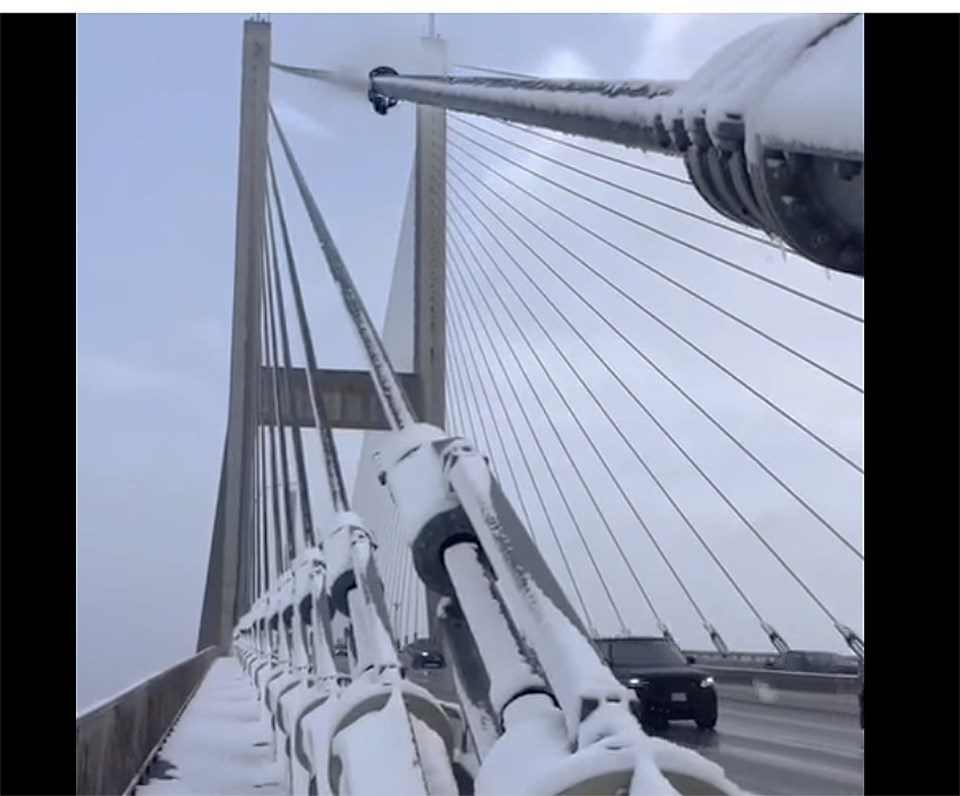The B.C. Ministry of Transportation and Infrastructure is readying its plan in the hope it can avoid the occurrence of ice bombs on the Alex Fraser Bridge.
The ministry on Friday said it and its maintenance contractors are closely monitoring weather conditions at the Alex Fraser and Port Mann bridges.
Advanced weather data means crews are better prepared to deal with ice and snow, and can activate a cable collar systems sooner in bad weather.
The cable collar systems are used to remove snow that builds up on the cables in order for traffic to safely pass.
Snow and ice bombs had been a rare occurrence since the Alex Fraser Bridge opened in 1986. Over the past few years, however, falling ice and snow has become a regular occurrence, damaging windshields and creating hazards.
A system of cable collars has been in place to help prevent the build-up of snow and ice on both the Port Mann and Alex Fraser bridges, with the system adopted for the Port Mann in 2013 and for the Alex Fraser in winter of 2017/18.
In the years that cable collars have been used, they have been successful in removing most of the snow on the cables, the ministry notes.
However, some snow may be shed naturally from the cables as the weather warms or if it is blown off.
The ministry says that to better prepare for the weather conditions that lead to falling ice and snow, it has taken steps to improve its weather forecasting and will be activating the cable collar systems sooner in bad weather.
In certain conditions, a partial or full closure of the two bridges may be necessary to ensure driver safety. Drivers are reminded to check their route on DriveBC before setting out.
When it comes to overall occurrence of accidents, not just involving snowy weather or falling snow and ice, the Alex Fraser Bridge had 260 crashes in 2021.
That’s according to ICBC statistics released earlier this summer, noting that figure is up from the 217 crashes in 2020 but lower than the 304 bridge crashes in 2019.




